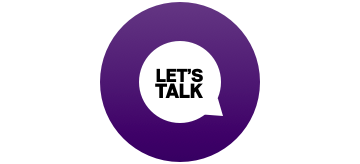- Find an office
-
File Your Taxes
 Find a Location
Find a Location -
Resolve Tax Issues
 Resolve Tax Issues
Resolve Tax IssuesResolve Tax Issues
-
Tax Resources
 See all Tax Help
See all Tax HelpTax Tools
Tax Tips & Resources
- Where's My Refund
- Refund Advance
- Promotions & Coupons
- Hiring Local Jobs!
- Careers
- Search
- Contact Us
- Feedback
-
 Log in | Sign up
Log in | Sign up

JH Accounts
|
|
Oh no! We may not fully support the browser or device software you are using ! To experience our site in the best way possible, please update your browser or device software, or move over to another browser. |

We can help resolve your tax issues. Call (855) 357-8933 today.

Back Taxes and Tax Debt
How to get an IRS tax levy released
The IRS has many options to collect tax debts. Some of its more infamous tools include federal tax liens, wage garnishment, refund offsets, and levies.
What is a tax levy?
A levy is a legal seizure of your property to pay a tax debt. When the IRS issues a levy, it can seize your wages, funds in your bank account, Social Security benefits, retirement income, and personal property like cars, boats, and real estate.
Levies are one of the last steps the IRS will take to collect tax debt. It won’t be a surprise, either. The IRS will send you multiple notices trying to collect your tax debt before issuing levies
How long does it take for the IRS to issue a tax levy?
Generally, the IRS will issue a levy only after these three things happen:
- The IRS charged you, or assessed, the tax and sent you a tax bill (Notice and Demand for Payment).
- You didn’t answer or refused to pay the tax.
- The IRS sent you a levy notice (Final Notice of Intent to Levy and Notice of Your Right to a Hearing) at least 30 days before the levy. The IRS may give this notice in person, leave it at your home or business, or send it to your last-known address by certified or registered mail, return receipt requested. The IRS can still levy you even if you didn’t get the notices because you moved and didn’t notify the IRS.
If the IRS levies your state tax refund, you may get a Notice of Levy on a State Tax Refund after the IRS has taken your refund to pay your back taxes. In addition to property you own, the IRS also has access to property you partially own with others, including business income, bank accounts, rental income, and much more.
What does it take for an IRS tax levy to be released?
The quickest and most effective way to get an IRS levy released (for good) is to pay all the taxes you owe. However, most people dealing with an IRS levy can’t pay. You can get the levy released without paying the taxes you owe. However, you will need to get into an agreement with the IRS to release the levy. If you break this agreement, you will again be subject to an IRS levy. There are a few other ways the IRS will release a levy:
- The collection statute expiration date passed before the IRS issued the levy.
- Releasing the levy will help you pay the taxes.
- The levy creates an economic hardship, meaning the IRS decides the levy is preventing you from meeting basic, reasonable living expenses.
4 ways to stop an IRS tax levy
The IRS has 10 years to collect tax debt. Unless the IRS suspends the debt, extends the debt, or accepts a payment plan, the IRS can’t collect the taxes after that date. If you’re within the collection period and can’t pay your tax debt, you have some options to help manage the debt and maybe remove the levy. These include the following:
- Request a payment plan: A payment plan (also called an installment agreement) is an agreement to pay your tax debt back over a specific time. The IRS offers short-term and long-term payment plans, ranging from 180 days or less, up to the number of months left on the statute to collect. Your situation (how much you owe, how fast you can pay it, etc) will determine the plan that’s best for you and whether you qualify. Once the IRS approves your payment plan, you can ask the IRS to immediately release the levy.
- Prove that the levy is causing economic hardship: If the levy creates severe economic hardship for a household. The IRS is required to leave you with enough money to cover immediate household expenses.
- Request hardship status: This status is called currently not collectible (CNC). It means you can’t pay based on your current income and necessary and allowable personal living expenses. It doesn’t mean that your tax debt goes away.
- Offer in compromise (OIC): An OIC allows you to settle your tax debt for less than you owe. The IRS will look at your income, expenses, equity in assets, and ability to pay to decide whether to accept your offer. Normally, when you request an OIC, the IRS will remove the levy. Just in case, contact IRS Collection to let them know you filed for an OIC and ask them to remove the levy. Learn more about the OIC process.
If any of these options seem too complicated to execute, or the idea of dealing with the IRS and outstanding debt isn’t for you, Jackson Hewitt’s Tax Resolution Services provides a full suite of options to effectively manage IRS issues.
How Jackson Hewitt can help
Jackson Hewitt’s team has a wide variety of tools to manage tax issues. Whether simple or complex, our team is trained to work directly with the IRS and keep our clients updated throughout the process. Contact us to learn about our resolution process and see how committed Jackson Hewitt is to working hard for the hardest working.
When every dollar matters, it matters who does your taxes™
-
TRUSTED GUARANTEES.
Be 100% certain about your money & your taxes, year after year.
-
NATIONAL PRESENCE. LOCAL HEART.
We’re in your neighborhood & inside your favorite Walmart store.
-
40+ years. 60+ million returns.
The kind of trusted expertise that comes with a lifetime of experience.






